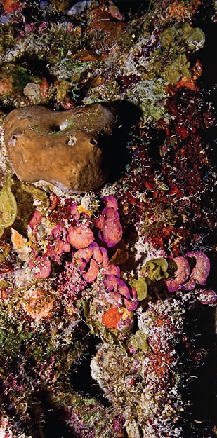Reef record shows two-thousand year growth spurt
 A study led by University of Sydney scientists has had a long look back at the Great Barrier Reef’s history, probing deepwater fossils for the natural wonder’s life story.
A study led by University of Sydney scientists has had a long look back at the Great Barrier Reef’s history, probing deepwater fossils for the natural wonder’s life story.
Deepwater fossils, trapped in ‘mesophotic reefs’ act like a record of environmental disturbances over thousands of years, and can be used to show how the reef responds to global sea-level rise and environmental changes.
The results of a study published in the journal Palaeogeography, Palaeoclimatology, Palaeoecology analyse the environments and timeframe that the different sections of the Great Barrier Reef developed under.
“Nothing was previously known about the long-term record of mesophotic reefs on the Great Barrier Reef, and in fact, mesophotic reefs have been rarely, if ever, analysed using their fossil records, so this study is a real first,” said Dr Jody Webster, from the University of Sydney’s School of Geosciences.
A research team from the Australian Nuclear Science and Technology Organisation, Universidad de Granada, University of Oxford, University of Edinburgh, Aix-Marseille Université, Queen's University and the University of California came together for the world-first investigation.
“Significantly, our findings suggest that while these mesophotic reef systems have been an important part of the Great Barrier Reef's geologic past over the last 20000 years, they have actually been very sensitive to past environmental changes, such as sea level rises and increased sediment flux.
“This, of course, has relevance to how the modern Great Barrier Reef deepwater reef systems might behave in the future,” Dr Webster said.
Deepwater reefs are difficult to access by scuba-diving, so very little research has been carried out on this type of reef around the world, especially in comparison with their more accessible shallow-water counterparts.
“Even in low light, the modern mesophotic reefs support corals, sponges and algae as the dominant structural components,” said Dr Webster.
“We focussed on three fossil mesophotic reefs in the Great Barrier Reef and examined the timing of their development, analysed the species and uncovered the historical environmental settings for the reefs.”
Using radiometric dating - carbon-14 and uranium-thorium dating - as well as analysing the sedimentary layers and historical ecology of the fossil reefs, the team discovered that the mesophotic reefs in the Great Barrier Reef had two specific periods of growth.
“We found that there were two distinct generations of fossil mesophotic coral community in the Great Barrier Reef - the first period was from 13000 until 10200 years ago, with a roughly two thousand year break, then the second period from 7800 years ago until now,” said Dr Webster.
“This period of over two thousand years when mesophotic coral growth was interrupted happened when there was a massive sediment flux, with sediment moving from the reef shelf to the basin. It appears that this huge movement of sediment happened as sea levels rose - flooding a huge area of the shelf during this time.”
The team says it is important to see how the mesophotic reef has responded to various challenges in the past. It is possible that the Reef may face some of the same environmental changes in the near future, as global sea levels rise.








 Print
Print